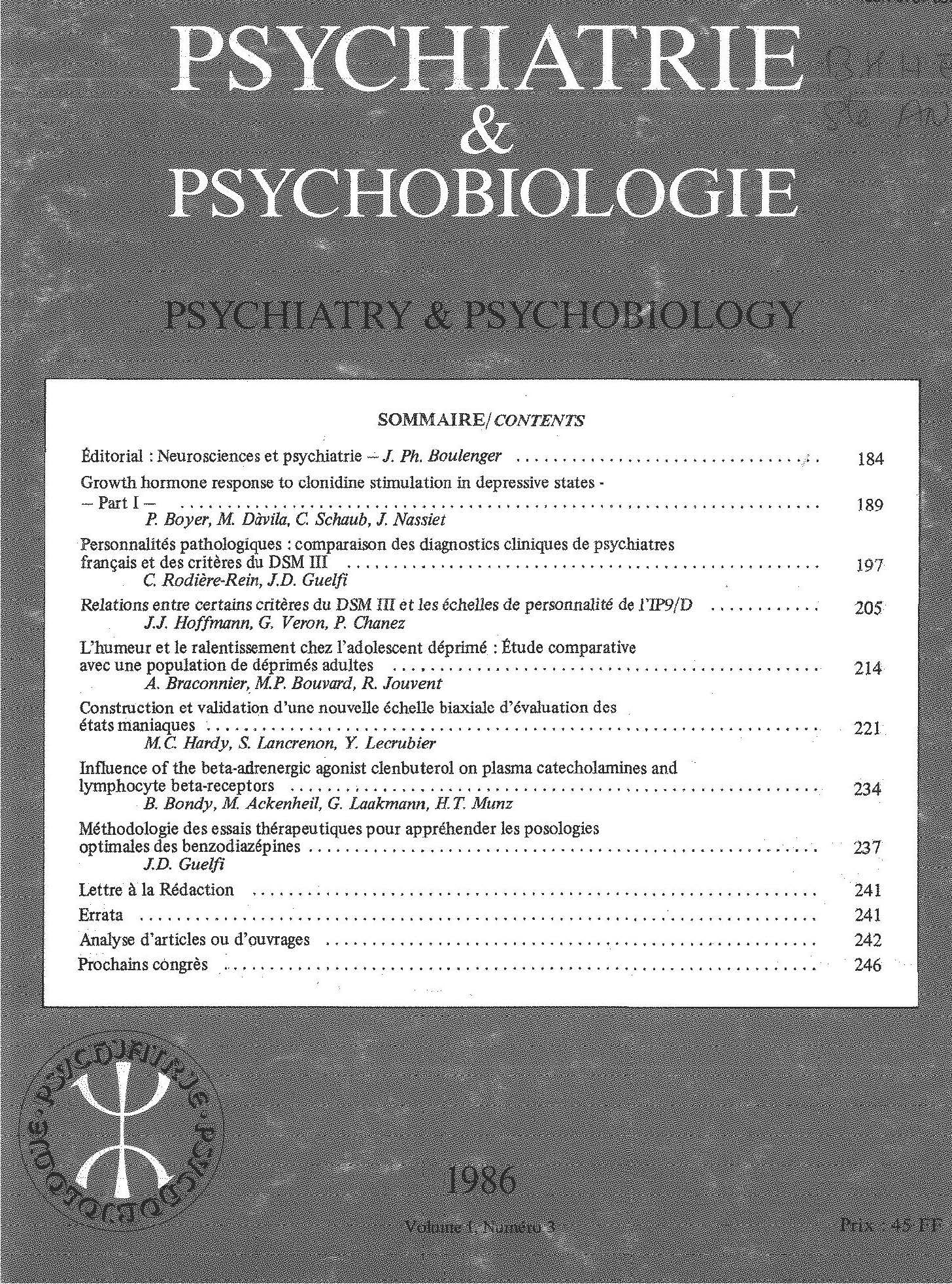No CrossRef data available.
Article contents
Inhibiteurs calciques et troubles de l’humeur: une revue de la littérature
Published online by Cambridge University Press: 28 April 2020
Résumé
Les auteurs présentent une synthèse des études publiees sur l’effet thérapeutique des inhibiteurs calciques, en particulier du vérapamil, dans les troubles dysthymiques. L’ensemble des observations rapportées regroupe un total de 109 patients présentant un état maniaque ou hypomaniaque d’intensité modérée, d’apparition spontanée ou induite par les antidépresseurs, traités sur des durées s’échelonnant entre 14 jours et 18 mois. Ces études objectivent une action prophylactique du vérapamil au moins égale à celle du lithium et une action curative antimaniaque plus rapide qu’avec le lithium. Le vérapamil est souvent efficace chez les patients résistants au lithium et a l’avantage de ne pas nécessiter de surveillance régulière des taux plasmatiques. Il s'avère régulièrement inefficace chez les patients qui sont à la fois résistants au lithium et à la carbamazépine. C’est dans le traitement et la prévention des virages maniaques induits par les antidépresseurs que l’action du vérapamil est la plus manifeste. L'action antimaniaque d’autres inhibiteurs calciques (diltiazem, groupe des dihydropyridines) a été beaucoup moins étudiée. Il ressort que les inhibiteurs calciques peuvent constituer une alternative intéressante aux autres régulateurs thymiques dans le traitement des troubles de l’humeur ; toutefois, la toxicité cardio-vasculaire et neurologique de leur association au lithium ou aux bêta-bloquants mérite d’être mieux appréciée. L’intérêt de telles substances dans le traitement des troubles dépressifs est très discutable, la prise d’inhibiteurs calciques ayant même été incriminée dans l’apparition d’une dépression chez des patients normothymiques. Quelques-unes des propriétés et des interactions entre calcium, lithium, neuromédiateurs et inhibiteurs calciques sont évoquées.
Summary
A review of the studies published on the therapeutic effects in mood disorders of calcium antagonists, and in particular of verapamil, is presented. The cases reported in the literature amount to a total of 109 patients presenting with a manic or hypomanic syndrome of moderate intensity, of spontaneous onset or induced by antidepressants, treated for periods ranging from 14 d to 18 mths. These studies indicate a preventive action of verapamil, at least equal to that of lithium, and a more precocious curative action on the manic symptoms than that obtained with lithium. Verapamil is often efficient in patients resistent to lithium and has the advantage of not requiring supervision of serum concentrations. It regularly proves inefficient in patients resistent to both lithium and carbamazepine. The action of verapamil is most evident in the treatment and prevention of antidepressants induced switches into mania. Far fewer studies have been carried out on the action of other calcium antagonists (diltiazem, dihydropyridine group). Hence, calcium antagonists may constitute an interesting alternative to other mood regulators in affective disorders; nevertheless, their cardiovascular and neurological toxicity, when co-administered with lithium or beta blockers requires further investigation. The value of such substances for the treatment of depression is much less evident and treatment with calcium antagonists has even been accused of inducing depression in normothymic subjects. Certain properties and interactions between calcium, lithium, neuromediators and calcium antagonists are evoked.
Keywords
- Type
- Revue
- Information
- Copyright
- Copyright © European Psychiatric Association 1990



Comments
No Comments have been published for this article.